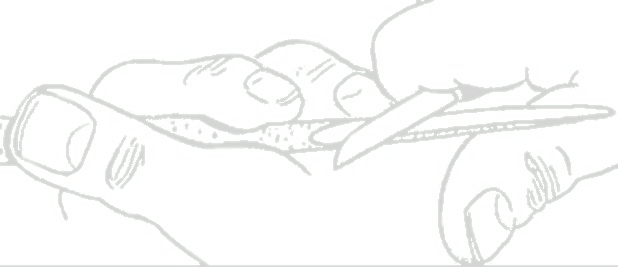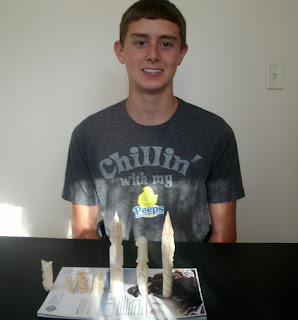There are several manners in which we can carve this Eagle Head. We can use just a knife, or just a gouge. Or we can use a combination of both.
Before starting to rough out the blank, sketch the features on both sides of the blank. As you rough out the blank you'll be redrawing these features several times.
Before we begin to rough out the Eagle Head with the knife and/or gouge we need to realize how an Eagle Head actually looks. For our purposes we can divide the head into two parts - the beak and the feathered head. Both the beak and the head must be rounded off, from their square blank. Begin to round off the head, neck area, and the beak. Pay close attention to the direction of the grain. Remove wood in the direction of the grain. Remove small chips until you are sure of the grain direction. Before you completly round off the head and the beak, you need to draw the features on the top of the beak and head (top view). Next you can continue to remove wood to round off the head and neck area.

Earlier I stated that there were two tools that could be used. You can rough out the blank with a knife or a gouge; or use both. I usually start out with knife, and in the case of this Eagle Head, I'll finish up with the gouge. I rough out with the knife and do the finish carving with the gouge. By finishing the head and neck area with the gouge it will actually look like feathers, and require very little additional work before painting.
For illustration purposes I carved one side of the Eagle Head completely with the knife and the other side was finished up with the gouge.
We'll finish the Eagle Head up in the next posting.






















 The owls are the first things that Trevor attempted and completed. After he started out with the owls, on his own, I spent a few hours sitting with him and he began to do the Wizards.
The owls are the first things that Trevor attempted and completed. After he started out with the owls, on his own, I spent a few hours sitting with him and he began to do the Wizards. 